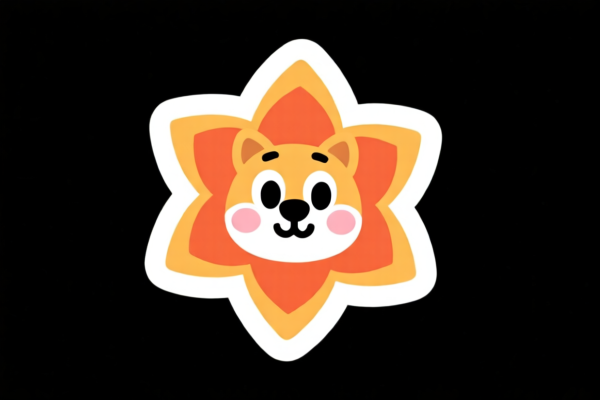| HS Code | Official Doc | Tariff Rate | Origin | Destination | Effective Date |
|---|---|---|---|---|---|
| 5901101000 | Doc | 62.0% | CN | US | 2025-05-12 |
| 5901102000 | Doc | 59.1% | CN | US | 2025-05-12 |
| 5907006000 | Doc | 55.0% | CN | US | 2025-05-12 |
| 5907008090 | Doc | 55.0% | CN | US | 2025-05-12 |
| 6113009074 | Doc | 44.6% | CN | US | 2025-05-12 |
| 6113009084 | Doc | 44.6% | CN | US | 2025-05-12 |
| 5903901500 | Doc | 55.0% | CN | US | 2025-05-12 |
| 5903902500 | Doc | 62.5% | CN | US | 2025-05-12 |
| 5602101000 | Doc | 67.0% | CN | US | 2025-05-12 |
| 5602109090 | Doc | 65.6% | CN | US | 2025-05-12 |
| 4016990500 | Doc | 40.9% | CN | US | 2025-05-12 |
| 4016993510 | Doc | 55.0% | CN | US | 2025-05-12 |
| 3919905060 | Doc | 60.8% | CN | US | 2025-05-12 |
| 3919901000 | Doc | 61.5% | CN | US | 2025-05-12 |
| 3921901100 | Doc | 59.2% | CN | US | 2025-05-12 |
| 3921901500 | Doc | 61.5% | CN | US | 2025-05-12 |
| 4823901000 | Doc | 55.0% | CN | US | 2025-05-12 |
| 4823907000 | Doc | 55.0% | CN | US | 2025-05-12 |
| 4821904000 | Doc | 55.0% | CN | US | 2025-05-12 |
| 4821902000 | Doc | 55.0% | CN | US | 2025-05-12 |




Cloth Sticker
A cloth sticker, also known as a fabric patch, iron-on patch, or embroidered patch, is a piece of embroidered fabric applied to clothing, bags, or other textiles as a decorative or functional element.
Material:
- Base Fabric: Typically cotton, linen, or polyester, providing the foundation for the embroidery.
- Threads: Commonly rayon, polyester, or cotton threads are used for the embroidered design.
- Backing: A heat-activated adhesive layer is crucial for iron-on varieties. Common backing materials include thermoplastic polymers. Some patches lack adhesive and are designed for sewing only.
- Stabilizer: Often a backing material used during the embroidery process to prevent fabric distortion.
Purpose:
- Decoration: Adding aesthetic appeal to garments, bags, hats, and other items.
- Customization: Personalizing items with unique designs, logos, or names.
- Repair: Covering holes or tears in fabric, extending the life of clothing.
- Identification: Used on uniforms to denote rank, affiliation, or achievements.
- Collectibility: Patches are often collected as souvenirs or representations of groups/events.
Function:
Cloth stickers adhere to textiles through either heat application (iron-on) or by being sewn onto the fabric. Iron-on patches utilize the adhesive backing to bond with the fibers of the fabric when exposed to heat and pressure. Sewn-on patches are attached using needle and thread, providing a more durable and permanent bond.
Usage Scenarios:
- Clothing: Jackets, jeans, shirts, dresses, pants, skirts.
- Accessories: Bags, backpacks, hats, caps, shoes.
- Home Decor: Pillows, blankets, curtains.
- Uniforms: Military, police, scout, school, sports teams.
- Craft Projects: Scrapbooking, quilting, DIY customization.
Common Types:
- Iron-on Patches: Backed with heat-activated adhesive for easy application. Suitable for most fabrics except those sensitive to heat.
- Sew-on Patches: Require stitching to attach. More durable than iron-on patches and suitable for all fabrics.
- Embroidered Patches: Feature designs created using embroidery thread. Can range from simple to highly detailed.
- Woven Patches: Created using a weaving process, often used for logos and intricate designs. Generally more durable than embroidered patches.
- Die-Cut Patches: Cut to a specific shape, often used for logos and custom designs.
- Sublimated Patches: Designs are printed onto the fabric using a sublimation process, allowing for full-color designs.
- Velcro Patches: One side has hook material, the other has loop material, allowing for easy attachment and removal.
- Bullion Patches: Feature raised, textured designs created using metallic threads. Commonly used in military and ceremonial applications.
The declared goods, “cloth sticker,” can be interpreted as adhesive sheets or flat shapes of plastic or combined with textile materials. Here are relevant HS codes based on the provided reference material:
- 3919905060: This HS code falls under Chapter 39, which covers “Plastics and articles thereof.” Specifically, it covers “Self-adhesive plates, sheets, film, foil, tape, strip and other flat shapes, of plastics, whether or not in rolls,” categorized as “Other: Other Other.” This could apply if the cloth sticker is primarily plastic-based with an adhesive backing. The total tax rate is 60.8%.
- 3919901000: Also under Chapter 39, this HS code covers “Self-adhesive plates, sheets, film, foil, tape, strip and other flat shapes, of plastics, whether or not in rolls,” categorized as “Other: Having a light-reflecting surface produced in whole or in part by glass grains (ballotini).” If the cloth sticker has a reflective surface created with glass grains, this code is applicable. The total tax rate is 61.5%.
- 3921901100: This HS code falls under Chapter 39, covering “Plastics and articles thereof.” It specifically refers to “Other plates, sheets, film, foil and strip, of plastics,” categorized as “Other: Combined with textile materials and weighing not more than 1.492 kg/m2: Products with textile components in which man-made fibers predominate by weight over any other single textile fiber: Over 70 percent by weight of plastics.” This applies if the cloth sticker is a combination of plastic and textile materials, with the plastic content exceeding 70% by weight and man-made fibers being the predominant textile fiber. The total tax rate is 59.2%.
- 3921901500: Also under Chapter 39, this HS code covers “Other plates, sheets, film, foil and strip, of plastics,” categorized as “Other: Combined with textile materials and weighing not more than 1.492 kg/m2: Products with textile components in which man-made fibers predominate by weight over any other single textile fiber: Other (229).” This applies if the cloth sticker is a combination of plastic and textile materials, with the plastic content being significant and man-made fibers being the predominant textile fiber, but doesn't meet the >70% plastic weight requirement. The total tax rate is 61.5%.
It is important to determine the primary material composition (plastic vs. textile) and the weight percentage of each to accurately classify the cloth sticker. If the cloth sticker is primarily textile-based with an adhesive backing, other HS codes may be more appropriate, but are not found within the provided reference material.
Customer Reviews
No reviews yet.